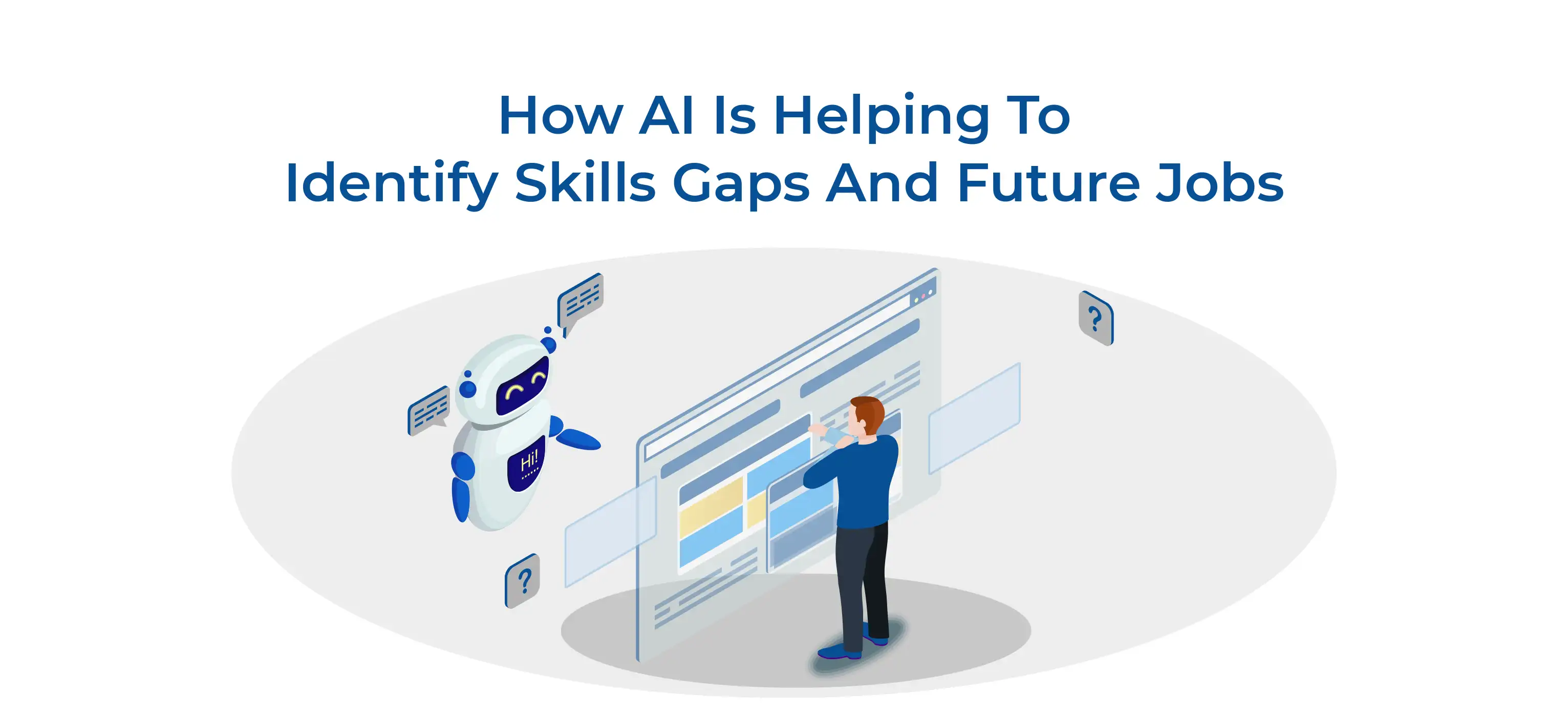 Jothi Kumar
Dec 04, 2024
Jothi Kumar
Dec 04, 2024

Artificial Intelligence has emerged as a powerful force driving industry innovation and transformation. One area where AI's impact is particularly significant is in identifying skills gaps and predicting future jobs. As technology advances and job requirements evolve, understanding the changing skills landscape becomes crucial for individuals and organizations.
This blog will explore how AI is revolutionizing the way we identify skills gaps and forecast future job trends, ushering in a new era of workforce preparation and strategic planning.
Check Out: What is Generative AI And How Does it Work
The skills gap is the difference between the skills and knowledge that employers require to perform certain job roles effectively. It refers to the actual skills possessed by individuals in the job market or within a company. Skill gaps can be caused by a variety of factors, such as changes in technology, advancements in industry practices, and changes in the educational system.
Factors contributing to skills gaps include:
The consequences of skills gaps are far-reaching. They include high unemployment rates as individuals struggle to find suitable jobs. Moreover, businesses face reduced productivity due to a lack of skilled workers. Skills gaps can also contribute to economic disparities, creating a divide between those with in-demand skills and those without, exacerbating social and economic inequalities.
Traditionally, identifying skills gaps has relied on methods such as surveys and self-reported data from individuals and employers. Additionally, analysis of labor market data and job vacancy statistics has been employed.
While these approaches provide some insights, they have limitations such as data accuracy and timeliness issues. As the dynamics of the job market evolve rapidly, there is a need for more efficient and data-driven methods to identify skills gaps. This is where the role of AI becomes crucial in revolutionizing the process.
Check out: Will Artificial Intelligence Take Over Human Jobs by 2030?
AI, with its remarkable capabilities in data analysis and pattern recognition, is revolutionizing the identification of skills gaps. It can process large volumes of data quickly and identify patterns and trends that may go unnoticed through traditional methods.
AI-powered platforms and tools for skills assessment and gap identification include;
The benefits of AI in skills gap identification are;
Check out: Jobs Most at Risk of Being Replaced by AI
The integration of AI in predicting future job trends is revolutionizing the employment landscape. AI efficiently analyzes emerging technologies, industry trends, and labor market data through advanced analytics and machine learning algorithms to forecast upcoming job requirements. Collaboration between AI systems and labor market experts, along with support from government agencies and organizations, enhances the accuracy of these predictions.
Check out: How Chatgpt Is Changing The Job Market?
AI presents numerous opportunities for individuals and organizations to address skills gaps and navigate future jobs effectively.
Check out: Top Artificial Intelligence Applications
While AI offers immense potential, ethical considerations are essential to ensure fairness and protect privacy in skills assessment and job predictions. Measures must be taken to address bias in AI algorithms, safeguard data security, and maintain transparency in the decision-making processes. Striking a balance between AI-driven insights and human expertise is crucial to ensure AI's ethical and responsible implementation in addressing skills gaps and future jobs.
You may also interested in: Jobs Lost to Automation Statistics
In brief, AI is transforming the identification of skills gaps and predicting future job trends. It offers opportunities for individuals and organizations to make informed decisions, develop agile workforce programs, and reduce unemployment while bridging economic disparities. However, ethical considerations must be addressed to ensure fairness and privacy in AI-driven assessments. By harnessing AI's potential responsibly, we can shape a future where individuals and businesses thrive in a rapidly evolving job market.
Here is the list of other major locations where Edoxi offers Artificial Intelligence Course
Artificial Intelligence Course in Dubai | Artificial Intelligence Course in Qatar

Software and IT Trainer
Jothi is a Microsoft-certified technology specialist with more than 12 years of experience in software development for a broad range of industry applications. She has incomparable prowess in a vast grouping of software development tools like Microsoft Visual Basic, C#, .NET, SQL, XML, HTML, Core Java and Python.
Jothi has a keen eye for UNIX/LINUX-based technologies which form the backbone of all the free and open-source software movement. As a Big data expert, Jothi has experience using several components of the Hadoop ecosystem, including Hadoop Map Reduce, HDFS, HIVE, PIG, and HBase. She is well-versed in the latest technologies of information technology such as Data Analytics, Data Science and Machine Learning.